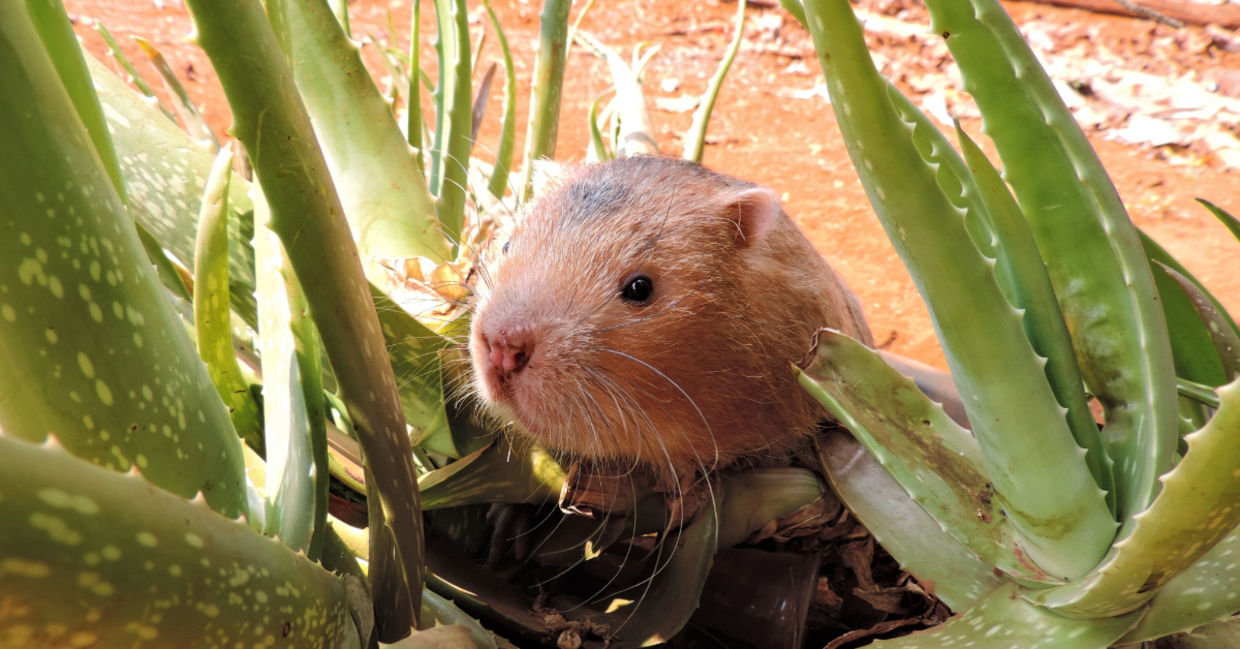
(Sunet Suesakunkhrit / Shutterstock.com)
This tiny, shy mole is so elusive, scientists had not seen one in nearly a century. Thanks to environmental DNA (eDNA), biologists recently located a De Winton’s golden mole. This cute and bashful mole has now attracted worldwide attention from environmentalists, conservationists, and animal lovers alike.
The blind, blond, and iridescent mole was last seen in 1937 on the north-western coast of South Africa, according to The Conversation. The mole tunnels its way through sand but since the sandy ridges collapse after it burrows, the mole is very hard to locate. It also spends most of its life underground, occasionally poking out from the sand to hunt insects at night.
Meanwhile, diamond and mineral mining in the area have caused the population to decline over the years. Many actually feared this elusive mole may be extinct.
Five scientists and a border collie on the search
In July, 2022, a group of five scientists, aided by a border collie, took up the search. They located evidence of mole tunnels and collected soil samples from inside the tunnel that contain tiny particles of hair, excretions, and skin cells.
The samples were sent to a lab where the DNA was sequenced. When scientists compared this to a 2010 specimen from a museum, they knew they had proof of a live De Winton’s mole! They were eventually able to capture not one, but two of these moles for their research.
The group’s exciting findings were published in Biodiversity and Conservation in November, 2023, where they acclaimed the incredible power of eDNA as an investigational tool. In fact, DNA can remain intact for up to hundreds of thousands of years in some conditions, especially cold, dry permafrost.
The team’s work was thorough; they collected some 100 soil samples from dunes and beaches along the coast and had to perform a genetic analysis on each one, according to a press release from the organization re:wild.
Opportunity for other lost species
“Though many people doubted that De Winton’s golden mole was still out there, I had good faith that the species had not yet gone extinct,” Cobus Theron, a member of the search team, said in the press release.
“I was convinced it would just take the right detection method, the proper timing, and a team passionate about finding it. Now not only have we solved the riddle, but we have tapped into this eDNA frontier where there is a huge amount of opportunity not only for moles, but for other lost or imperiled species,” Theron added.
The use of eDNA for identification can be used for rare, hard to capture, and dangerous species, according to the Biodiversity and Conservation article. The technique is also inexpensive, non-invasive to the species, and effective.
Since this initial discovery, the team has located another four De Winton’s golden mole populations, according to the press release. The next step is to protect them in their threatened environment.
Conservationists are inspired by this work and the use of eDNA to find other lost species. There may be species thought to be extinct that are actually alive, well, and burrowing somewhere. And thanks to eDNA technology, they can be located and protected.
YOU MIGHT ALSO LIKE:
Meet the Once-Endangered Butterfly Species Making a Soaring Comeback
An Inspirational True Love Story of Two Endangered Frogs
Snow Leopard Populations Are Finally Making a Comeback







